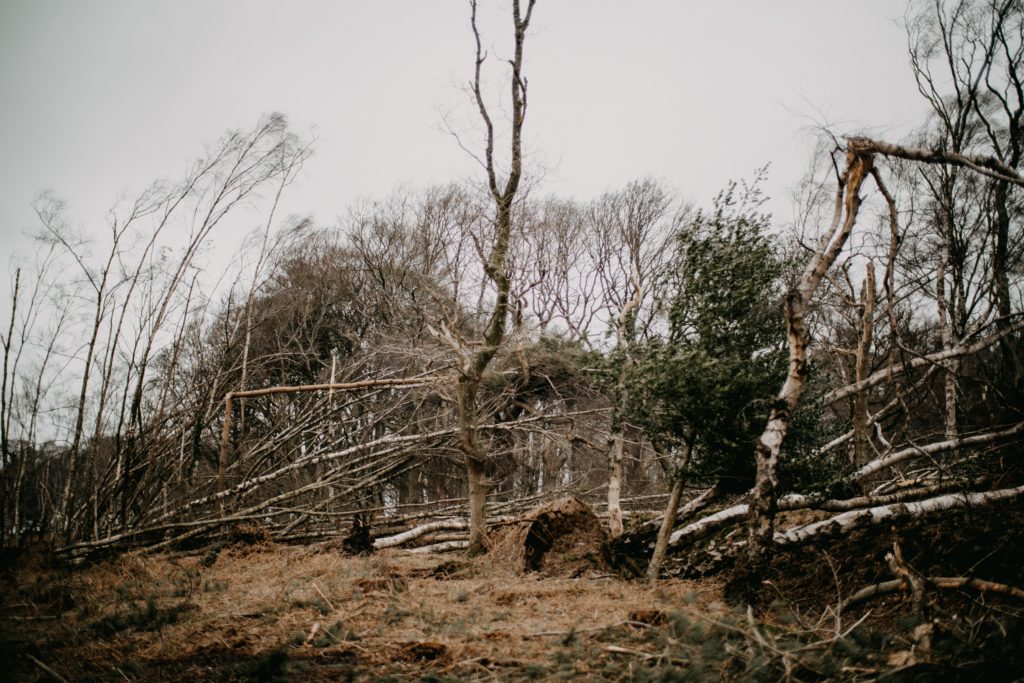Heatwaves, wildfires, red weather warnings we have had them all this year, but for me it is a November night that comes to mind. Storm Arwen. Her winds launched a ferocious attack on forests, buildings and power lines disrupting supply for 80,000 local homes leaving remote communities to endure up to ten days without electricity. Revised figures, show sixteen million trees were damaged, double the original estimate. Eight months on, many still lie where they fell.
We have been through raging storms before, what was different this time? Arwen’s 100mph plus windspeed was a factor, but the unusual northeast wind direction took a brutal toll. The tree’s root structures, could hold out against the usual south westerly winds, but proved defenceless against the full force of the storm.
I have flown in storm conditions before. Two incidents have stayed with me. It was the first time I had witnessed a fellow passenger sob uncontrollably as we were thrown around like the proverbial leaf, while making our way north. The second was the passenger next to me, a seasoned oil rig worker, who’s reaction to the buffeting was to look at me and wink, tighten his seatbelt, close his eyes, and drift off to sleep. We eventually landed on the fourth attempt to an explosion of relief, nervous laughter, and applause. Next time…I will pass.
Storms are not restricted to nature. Life can have its own seasons of turbulent events: ill-health, loss, relationship breakdown.
Stock markets specialise in this category. Current crosswinds of rising interest rates and high inflation have shaken capital markets and the “landing” at the end of June this year was bumpy, with the worst ever year-to-date fixed income returns. So why the change in fortunes?
Rising interest rates and inflation can be unwelcome news for shares: more so for fixed income. Here is a brief history lesson.
- The average UK interest rate from 1971 until 2022 was 7.17%, (currently 1.25%).
- It reached an eye-watering 17% in late 1979.
- And a record low of 0.1% in March 2020.
- The global financial crisis saw interest rates fall to their lowest level in 300 years.
- In March 2009 they fell to 0.5% falling to 0.25% in August 2016.
This perfect low interest rate, low inflation environment fuelled exceptional fixed income returns for over a decade. Perhaps the wind direction is changing.
Shares and bonds normally have an inverse relationship but recently this too has changed. This year we have seen an uncharacteristic convergence with both asset classes performing in similar fashion. This is rare but has happened before. Another history lesson coming, sorry!
- In the US it has only happened three times, the last being in 1969.
- In the UK it last happened in 1994.
How do we prepare? Let us return to Storm Arwen for a moment. We build extensive root networks for our portfolios capable of surviving whichever direction the storm may come from. We know nothing is certain or predictable. We also know there are no reliable patterns in market data. We have to be prepared for whatever markets throw our way.
What we do know is that there is always a period of calm and then recovery after a storm. We could wipe our brow, sigh with relief that it is over, and that we got through it. We do not. We sit down and examine what and why it happened with our key partners and make sure we improve our capacity to protect our clients from the next one… even if there is no cloud on the horizon.

